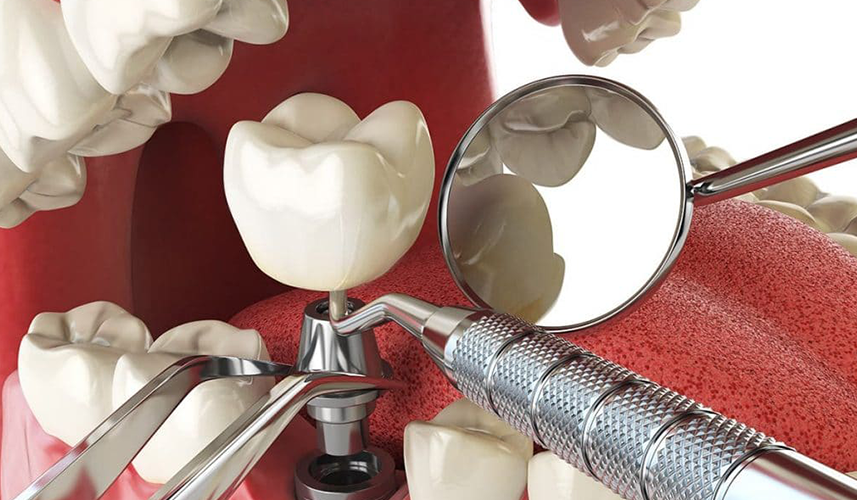Implants are artificial tooth roots, usually made of titanium, that offer a modern and effective solution for the treatment of missing teeth. Dental implants offer a fixed and aesthetic solution that replaces natural teeth by being placed in the jawbone. Missing teeth can negatively affect chewing and speaking functions and cause aesthetic concerns. Implant treatment significantly increases the quality of life of patients by eliminating these problems.
Structure and Types of Implants
Dental implants usually consist of three main parts:
Implant Body: A screw-like structure made of titanium or zirconium that is placed in the jawbone. This part imitates the natural tooth root and fuses with the jawbone to create a fixed foundation.
Abutment: An intermediate piece that provides a connection between the implant body and the prosthetic tooth. The abutment is placed on the implant and ensures the fixation of the prosthetic tooth.
Prosthetic Tooth: An artificial tooth that is placed on the implant and imitates the natural tooth. This prosthetic tooth can be a single tooth, a bridge or a full denture.
Implants can be of various types:
Endosteal Implants: The most common type of implant placed directly into the jawbone. They can be in the form of a screw, cylinder or blade.
Subperiosteal Implants: Implants placed on the jawbone, under the gum. They are usually used for patients with insufficient bone density.
Implant Treatment Process
Implant treatment usually consists of several stages:
Examination and Planning: In the first stage, the dentist evaluates the patient's oral structure, and the condition of the jawbone is examined with X-rays and other imaging techniques. This evaluation is important for the correct positioning of the implant.
Surgery: Implant placement is performed under local or general anesthesia. The gum is cut to provide access to the jawbone and the implant is placed. A few months are waited for the implant to fuse with the jawbone (osseointegration).
Healing and Temporary Prosthesis: The healing process begins after the implant is placed. During this process, a temporary prosthesis can be used. Once osseointegration is complete, the abutment is placed and the prosthetic tooth is prepared.
Placement of the Denture: Once healing is complete and the implant is firmly attached to the jawbone, the denture is placed on the abutment. The dentist checks the fit of the denture and makes any necessary adjustments.
Advantages of Implants
Dental implants offer many advantages over traditional dentures and bridges:
Natural Look and Feel: Implants look and feel like natural teeth. They provide excellent aesthetic results.
Permanent Solution: Can be used for a lifetime with proper care. They last longer than other denture options.
Functional Improvement: Greatly improves chewing and speech functions. Provides a fixed solution without putting pressure on other teeth.
Bone Preservation: Implants prevent bone loss by stimulating the jawbone. This helps preserve facial structure.
Comfort and Confidence: Since they provide a fixed solution, they eliminate the discomfort and insecurity that dentures can cause.
Implant Care and Healing Process
Regular care is essential for implants to remain long-lasting and healthy:
Regular Brushing and Flossing: They should be brushed and flossed regularly, just like natural teeth.
Regular Dentist Check-ups: Regular dentist visits are important for the condition of implants and oral health.
Healthy Lifestyle: Smoking should be avoided and a balanced diet should be followed. Smoking can negatively affect implant success.
In conclusion, dental implants offer an excellent solution for the treatment of missing teeth. Implants, which are superior in both aesthetic and functional terms, significantly increase the quality of life of patients. Thanks to modern dentistry techniques and materials, implant treatment can be performed safely and effectively.
